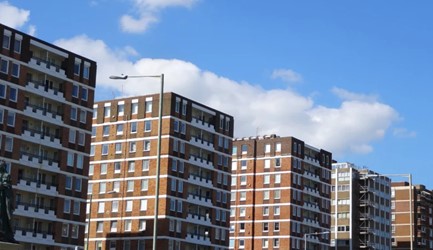Accountable Persons, Principal Accountable Persons, property owners and managers are all affected by The Higher-Risk Buildings (Keeping and Provision of Information etc.) (England) Regulations 2024. These Regulations highlight the importance of information management, transparency, and collaboration with residents and authorities alike as well as the importance of technology.
This article explores how these affect Accountable Persons and Principal Accountable Persons, the key aspects and implications of these regulations for property owners and managers and the types of documents that constitute the “Golden Thread.”
Information Management
The Regulations mandate comprehensive systems for keeping, sharing, and managing building safety related information. Accountable Persons and Principal Accountable Persons must maintain accurate records, covering construction details, fire and structural safety measures, maintenance records, and modifications made over time. The goal is to create easily accessible and shareable information for effective decision-making and stakeholder awareness.
The Golden Thread
The "Golden Thread" outlined in the regulations encompasses crucial information types, including;
- Fire Safety Management – including details of the fire safety equipment in place, and the risks associated with the building, prevention and mitigation actions and plans.
- Evacuation Strategy – information outlining the steps and procedures to take in the event of an emergency
- As-built plans and details – current layout, original layout,
- Construction Information - the building design including how the building was planned, designed and constructed including details of what design codes were used.
- Structural Risk Management – including details of the structural assessment of the building, its condition and the measures in place to protect residents and others.
- Building Safety Management Systems - including the schedule and records relating to the maintenance and repairs that are planned or taken in relation to any equipment, device or materials including any fixture or part of the fabric of the building.
- Completion Certification – full and partial completion certificates
- Registration and Key Building Information
- Building Assessment Certification
- Resident Engagement – including complaints and mandatory reporting issues
- Contravention Notices
Enhanced Transparency and Accountability:
Accountable Persons, Principal Accountable Persons, property owners, and managers need to provide information upon request to residents, relevant authorities, and other stakeholders. This move towards transparency is designed to empower residents to make informed decisions about their safety and well-being and it is the role of the Property managers and those who support Accountable Persons, Principal Accountable persons to foster an environment of openness and accountability within the higher-risk buildings they oversee. Technology is going to play a crucial role in managing this whole process going forward.
Technology:
In building safety management, organisations are seeing significant benefits in turning to the right software solutions to enhance their building safety protocols and streamline compliance. Software solutions have emerged as invaluable tools, revolutionising the way building safety is managed across industries, it’s not just about storage. From incident reporting to risk assessment, from compliance to information sharing, software platforms such as QUOODA offer a range of benefits that contribute to delivering a safer and more efficient work and living environment.
Collaboration:
The regulations emphasise collaboration between property managers and owners responsible for overseeing higher-risk buildings. Property owners, in conjunction with managers, must promptly provide information to the various authorities and residents, facilitating compliance and maintaining consistent safety standards.
This collaborative approach is intended to create a symbiotic relationship between Accountable Persons, Principal Accountable Persons, property owners, managers and regulatory bodies, working together to uphold the highest standards of safety in higher-risk buildings.
Information Security:
Provisions for limiting access to sensitive information and ensuring proper information security and confidentiality are included in the regulations. Only relevant information that is required to support registration, safety management, building assessment and design should be collected. The Regulations also require proper and effective information security and confidentiality regarding complaints etc.
Penalties for Non-Compliance:
Compliance with the Regulations is not optional. Non-compliance with information management requirements may lead to penalties for Accountable Persons and Principal Accountable Persons, impacting their reputation as well as owners, property managers and the buildings they oversee. A proactive implementation of robust information management systems is urged to meet regulatory standards and safeguard resident well-being.
Conclusion:
The Higher-Risk Buildings Regulations signal a paradigm shift in information management for higher-risk buildings. Accountable Persons and Principal Accountable Persons, supported by property managers and advisors, play a vital role in creating safer living environments and ensuring compliance with stringent safety standards. Embracing these changes contributes to the overall well-being and confidence of the residents they serve.




Leave Comment